This article is a brief summary of the information Pudding River Watershed Council has put together for public outreach around the Scotts Mills Dam Project. Want to read more? Check out our Interactive PDF to read our full library of resources, and the same information is live on our website.
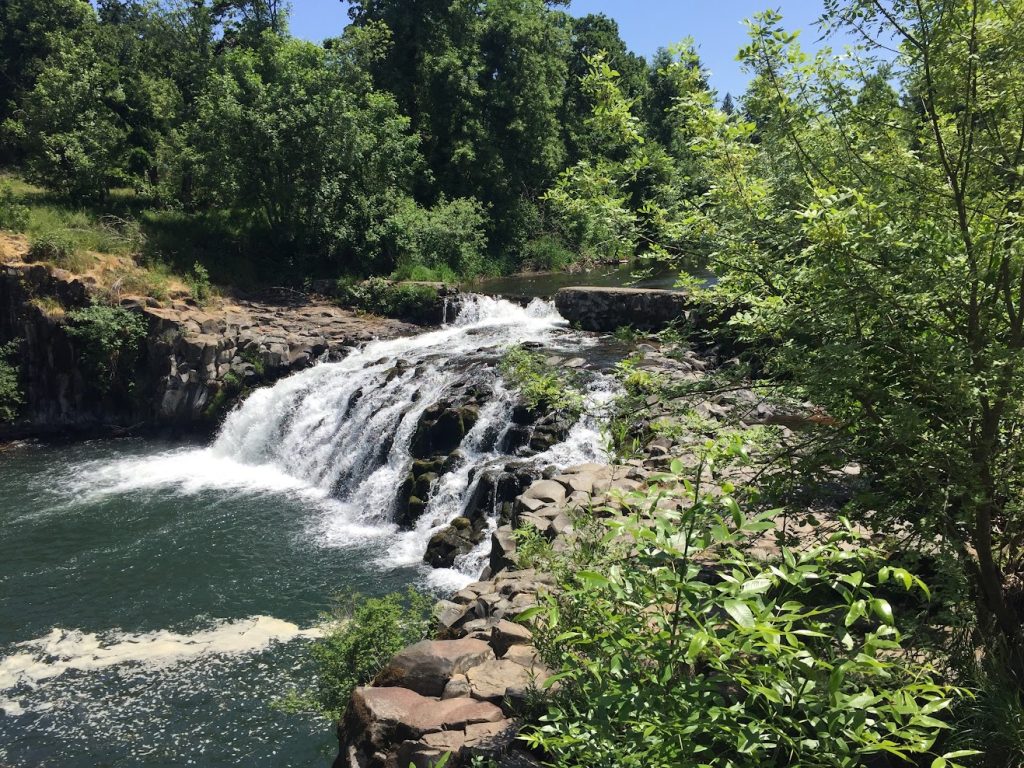
Grand Coulee, Bonneville, John Day, The Dalles, and … Scotts Mills?
When most people imagine dams they think of the giant ones, but there are also thousands of old, small dams across Oregon that have in many cases outlived their original purpose yet remain in the stream.
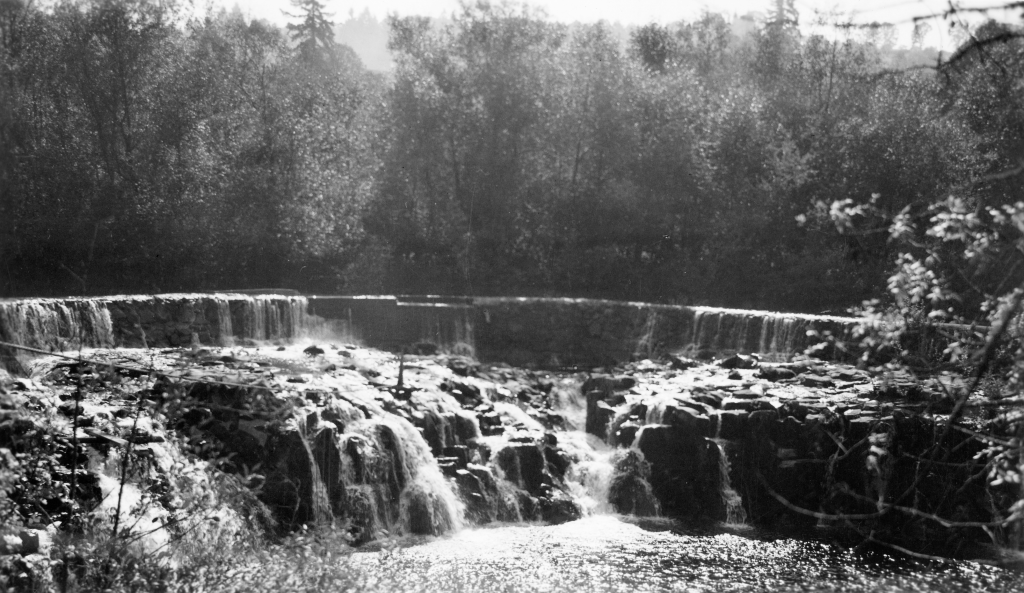
The Scotts Mills Dam, is a six foot tall, 100 foot wide dam built in 1917 to provide water for a hydroelectric plant that powered a mill and surrounding homes. Because of its small stature and low summer flows the dam only provided around 28% of the community’s energy needs. After a fire damaged the hydroelectricity plant in 1954, PGE decided it didn’t make financial sense to repair the equipment and shut down the plant for good, eventually donating the land to Marion County to build a park. 70 years later, the dam, now crumbling, still sits in Butte Creek at the heart of Scotts Mills County Park.
Why is the dam still there after all of these years? Dynamiting the dam to enable fish passage was first proposed in 1960, but the Marion County Parks Commission and other local residents were strongly opposed, citing the dam’s scenic beauty. But nowadays the dam is a crumbling eyesore, ever since the 1996 floods tore a large breach in the dam’s face. Each year more pieces of the dam break away and weaken during high flows.
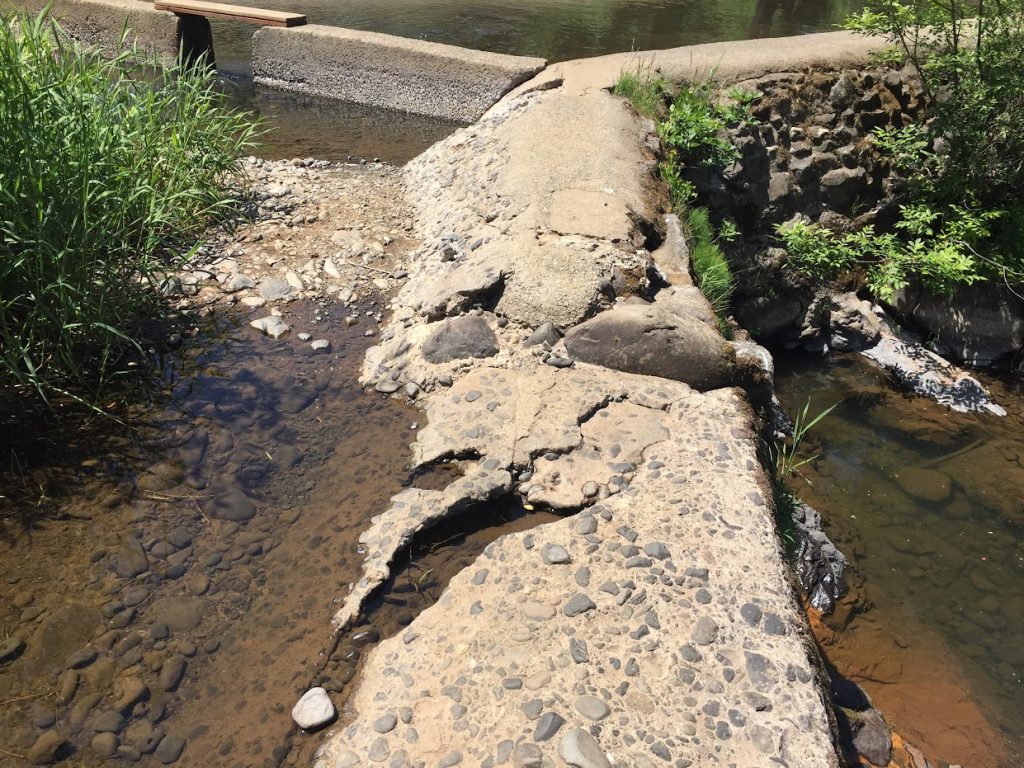
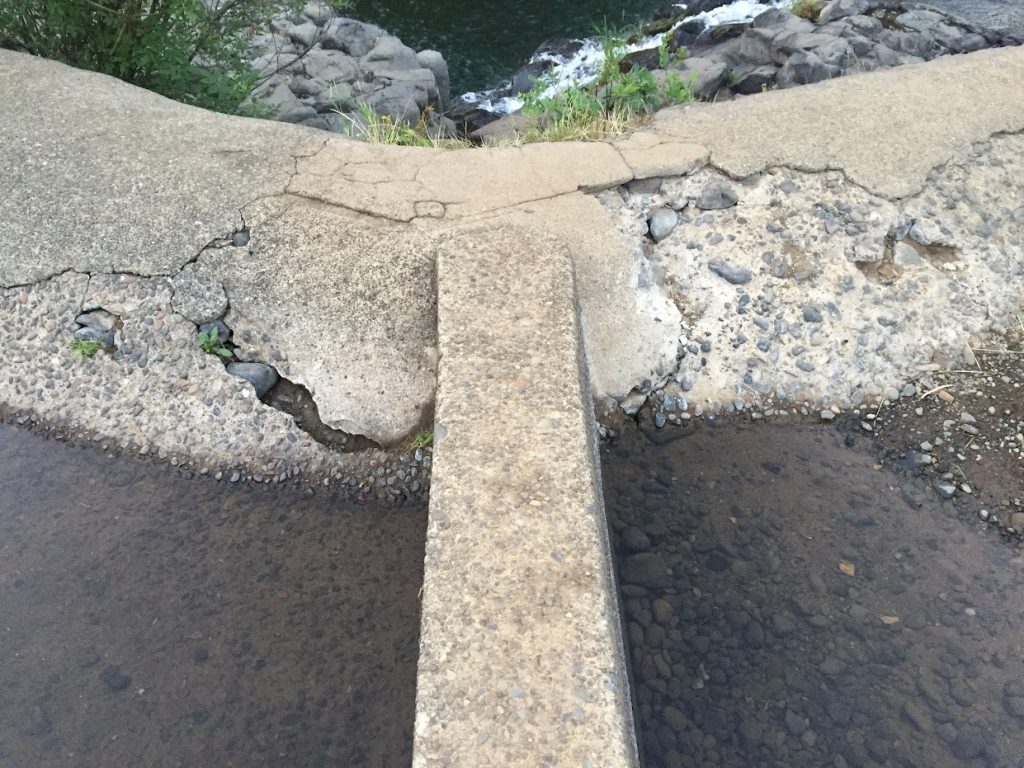
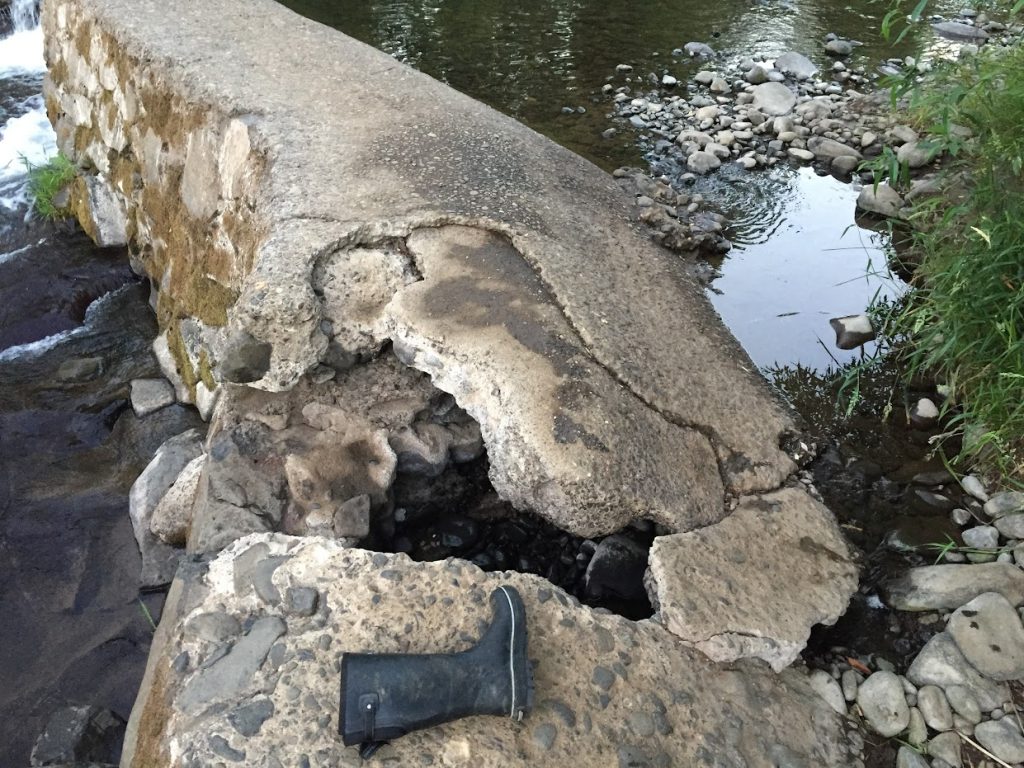
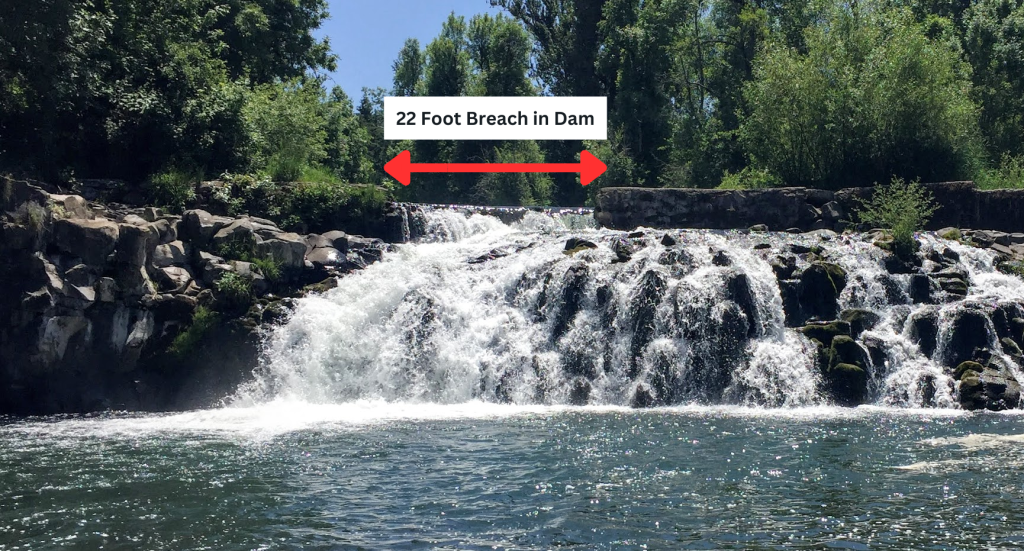
What should be done about the crumbling dam?
There are three possible paths forward:
1) Repair the dam.
2) Do nothing and let the dam collapse.
3) Remove the dam.
1) Repairing the Dam
Growing up in Mt. Angel and swimming at the park as a kid, I always wondered why someone just didn’t fix the dam. After researching the subject I found out why that hasn’t happened. Simply put, it’s both challenging and costly to repair a dam that isn’t used for anything. Sure, if it’s for flood control, irrigation, drinking water, or hydropower, a dam can justify the permits and maintenance needed for its use. But the Scotts Mills dam has no functional use. Additionally, repair work on the dam would trigger Oregon state fish passage laws and require the county to build a fishway that meets modern standards. The City of Silverton just did a study on what it would take to upgrade fish passage to modern standards at their water intake dam on Abiqua Creek, and the estimate was $4.3 million. $4 million just for a fishway! And that doesn’t factor in what it would cost for the design,, permits, and repairs.
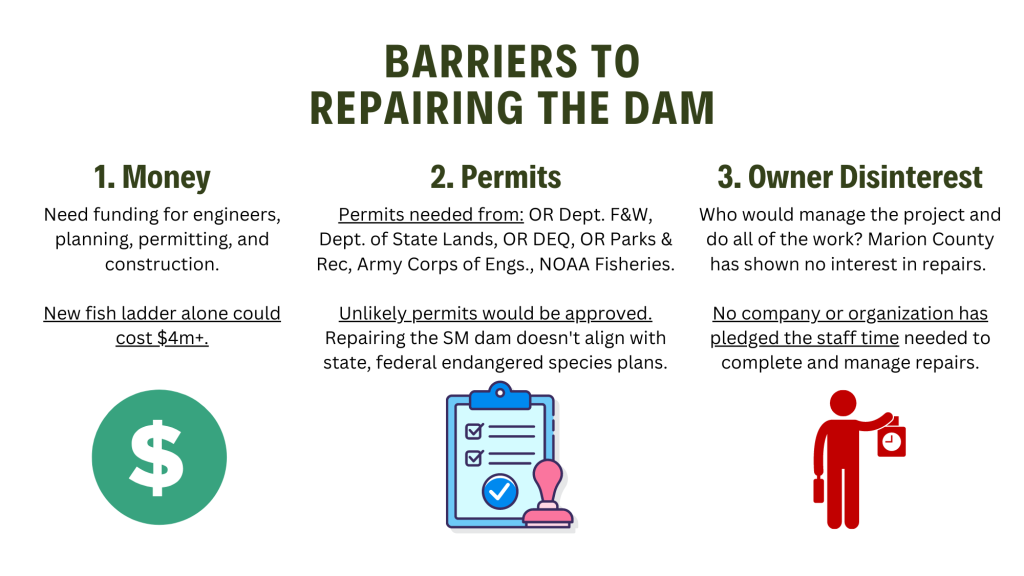
2) Doing Nothing
The crumbling dam creates numerous safety issues, and doing nothing could bring on a pile of negative consequences. Concrete and boulders would continue to break off the dam and ruin the park’s main swimming hole, the kiddie pool would be lost anyway, and the increasingly unstable dam would be a danger to the many visitors who recreate at the park.
3) Removing the Dam
That leaves us to the final option, which is dam removal. Removal would offer a suite of benefits to the County Park and local area, including the preservation of the swimming pool below the falls, improving public safety at the park, regaining the natural beauty of the falls, and restoring access to 19 miles of upstream habitat for chinook and steelhead, both of which are federally listed as threatened and listed as Sensitive for the Willamette Species Management Unit (SMU) at the state level.
And because removal would be in line with state and federal priorities, the permitting and funding of removal would be easy. In fact, the Pudding River Watershed Council, working with the Oregon Department of Fish and Wildlife (ODFW), has already received funding from Oregon Water Enhancement Board to remove the dam. Additionally, the Marion County Parks Department, who squashed removal efforts in 1960, voted unanimously to remove the dam in 2019. The City Council of Scotts Mills also voted to support removal in 2019 and again in 2023.
So if the City of Scotts Mills and the Marion County Parks Department support removal, what’s the hold up? Because the dam is owned by Marion County and equipment access is needed at the county park, the Marion County Commissioners must approve of the dam’s removal for the project to move forward.
Historical Significance
The dam can be viewed as a structure of historical significance, since it was built over a century ago in 1917. Pudding River Watershed Council is planning to work with concerned community members and the Scotts Mills Historical Society on a way to commemorate the historical significance of the dam.
Swimming and Recreation
Many residents have raised the question of how removal of the dam would impact swimming and recreation at the park. Pudding River WC and ODFW have done research and modeling to see how swimming would be affected by dam removal.
This video series covers three topics: swimming at the park and how it would be affected by dam removal, why not just repair the dam, and why remove the dam.
How can the community get involved in this project?
Pudding River WC just began a stakeholder engagement campaign to engage community members about the Scotts Mills Dam. If you have feedback, questions, or want to help, go to the Pudding River WC website for more information about how to get involved in the project. Thanks for reading, and again, if you would like to read more about the Scotts Mills Dam Removal project please check out our interactive PDF.
Kurt Berning
Co-Executive Director
Pudding River Watershed Council
About the Author

A native of Mt. Angel, Kurt has been involved in conservation since 2019 when he took over four acres of his parent’s farm and started converting it into a white oak woodland. After a decade working mostly in finance and accounting, in 2022 he made a career change and became the Co-Executive Director of the Pudding River Watershed Council.
